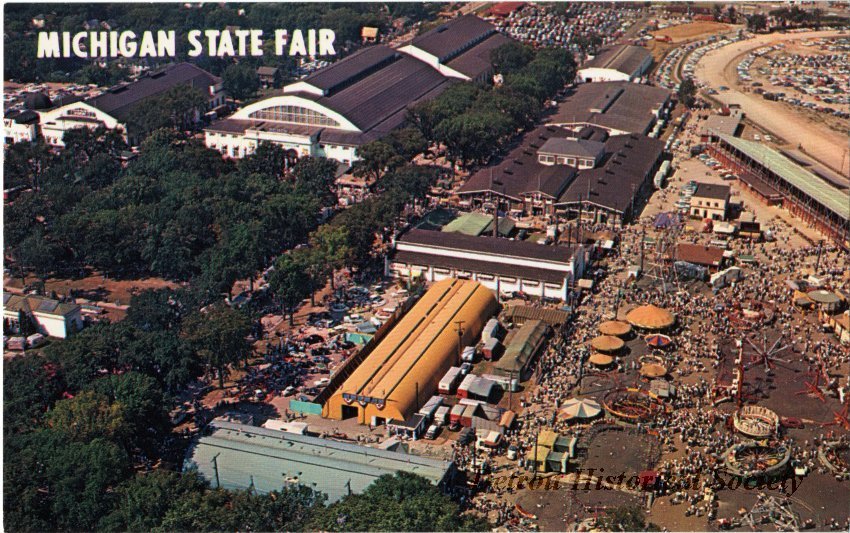The Michigan State Fair is a long-running annual event that features animal and agricultural displays and presentations, musical acts, carnival rides, and more. The first Michigan State Fair was held in Ann Arbor in 1839, however it drew very few attendants. The event was revived a decade later in Detroit. The 1849 event is considered the first “official” Michigan State Fair, reportedly making it the second oldest event of its kind behind the New York State Fair.
Michigan had been a state for only 12 years when the first official fair was held at a site located on Woodward Avenue north of Grand Circus Park. After 1849, the fair migrated to various towns, returning to Detroit periodically. In 1905, property at Woodward and Eight Mile Road was acquired as a permanent home for the State Fair. These grounds were acquired by a committee that included J.L. Hudson, and sold to the Michigan State Agricultural Society for one dollar. Over the years, the grounds expanded and buildings were constructed, including the Michigan State Fairgrounds Coliseum in 1922.
The fair has served as a forum for agricultural interests, where farmers from across the state win ribbons for their livestock and produce. For years, visitors to the fair have marveled at vegetables grown to enormous sizes, and have been able to get up close to prize farm animals. Beyond the agricultural, entertainment at the fair ranges from traditional carnival rides and games, contests, exhibitions, and live performances that have included Bob Hope, the Ink Spots, Alice Cooper, Boyz II Men, and Z.Z. Top.
The fairgrounds were once home to the world’s largest stove, originally built by the Michigan Stove Company for the World’s Columbian Exposition in 1893 in Chicago. The 25-foot-tall stove was displayed at the Michigan State Fair starting in 1965, but fell into disrepair and spent many years in storage until a restoration campaign brought it back to the fair in 1998. The stove caught fire and was destroyed in 2011. The home that President Ulysses S. Grant occupied during his Army years in Detroit was on the site of the fairgrounds until it was moved to Eastern Market.
An active site for over a century, the fairgrounds hosted events year-round beyond the annual Michigan State Fair. However, in 2009 amid financial struggles, Michigan Governor Jennifer Granholm ceased funding for the fair. The event was not held the following two years until it was rebranded in 2012 as “The Great Lakes State Fair.” Following that year, the event, once again the “Michigan State Fair,” resumed at the Suburban Collection Showplace in Novi, run by a private entity – The Michigan State Fair, LLC.
Following the end of the fair at the Woodward Ave grounds, the property was sold by Governor Rick Snyder, resulting in a portion of the land being developed into a shopping center. Many iconic buildings remain on site, and multiple plans have proposed uses for the remainder of the grounds. The fairgrounds were used as a drive-through testing site during the COVID-19 pandemic in 2020.

